Seated row bars are usually metal cable attachments with a handle for each hand. When used properly, they enable exercises that can fill out and strengthen the traps, rhomboids, and lats.
Although mainly used for a seated row machine, seated row bars can also be used on a lat pulldown machine as well. They can vary in width, grip, and thickness, and sifting through the often subtle differences of options on the market can be rather nuanced. So let’s grab on tight and find the right seated row bar for you.
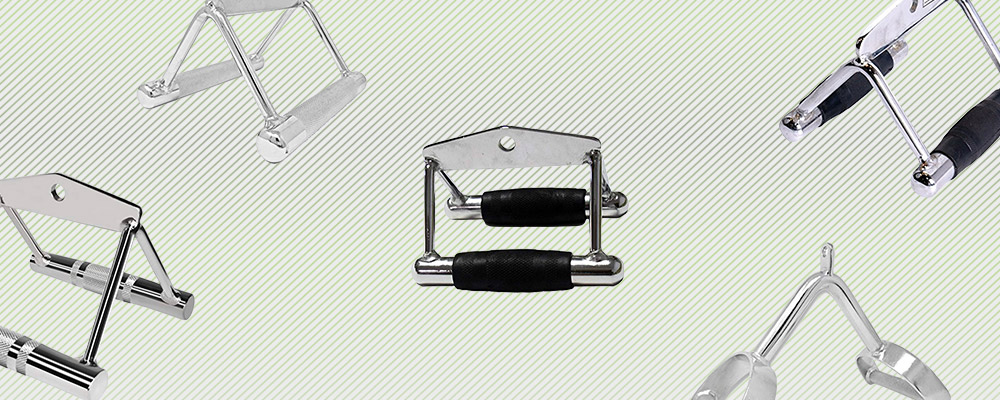
Editor’s Pick
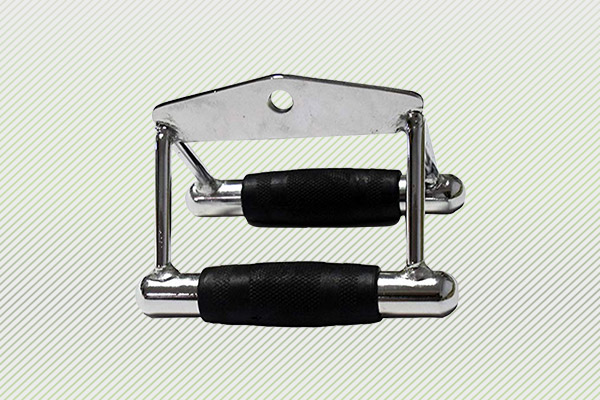
E2shop Deluxe Double D Handle V Shaped Bar
Pros:
- The thickness of the rubber grips may help strengthen forearms more efficiently than thinner competitors or rubberless options.
- More affordable than similar rubber grip options.
Cons:
- The rubber handles are knurled which may be uncomfortable for lifters who prefer a smooth grip.
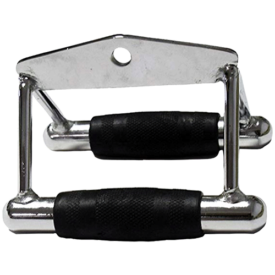
This 5lb seated row bar has textured rubber grips to help aid grip. This row bar can support up to 880lbs and has a chrome finish to prevent rust. It’s 7.5x6.5x5.5 (inches), which is fairly standard across most options on the market.
Contender
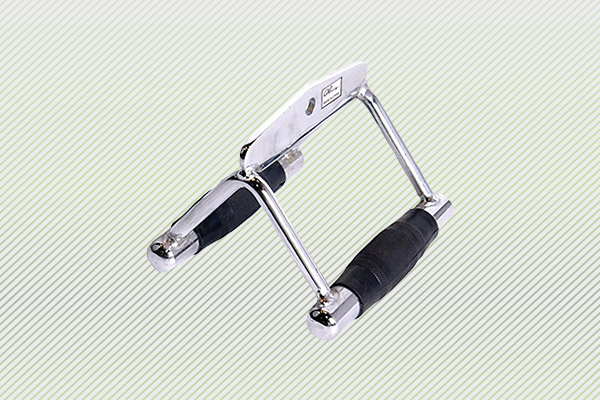
CAP Barbell Deluxe Double D Handle with Rubber Handgrips
Pros:
- Long handles may be better suited for lifters with larger hands.
- Rubber grips attached tightly enough to the bar to prevent them from sliding over time.
Cons:
- The rubber grips may begin to smell over time if used consistently with sweaty hands.

The CAP Deluxe Double D Handle is a solid steel row bar with rubber grips and protective chrome finish. The handle weighs 4.5lbs and is just under 8 inches in length, which is longer than most competitors.
Also Consider
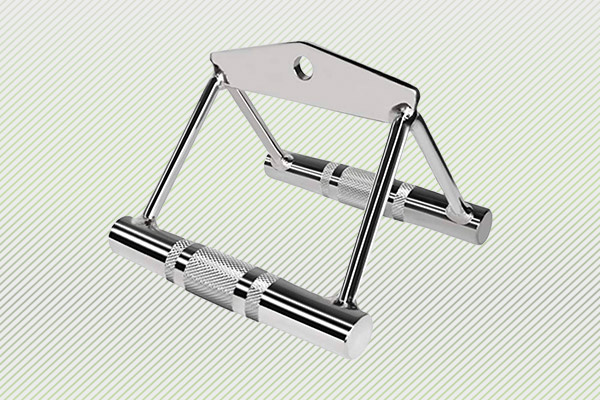
A2ZCARE V Shaped Press Down Bar
Pros:
- The knurling can help better align the grip of each hand for more symmetrical lifts.
- 1 inch handles may be better for athletes with smaller hands.
Cons:
- The chrome coating may be more prone to peel over time than other options.
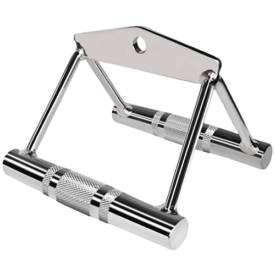
The A2ZCare V Shaped Bar is a chrome coated bar with a half inch cable attachment hole. The handles are 1 inch in diameter and have a wide knurling band in the center sandwiched by two thinner bands of knurling to help aid grip.
Best for Advanced Lifters

Garage Fit Wide Seated Row Handle
Pros:
- The wider grip likely better for larger athletes.
- Better potential to target the lats.
- The handles attaching to the V-bar in the center might be better for balance.
Cons:
- More expensive than most options on the market.
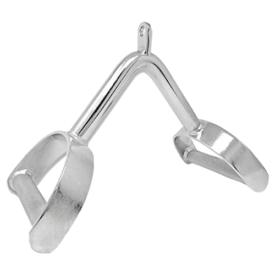
The Garage Fit Wide Seated Row Handle is a single V-shaped bar that has a D-shaped handle at each end. This bar lives up to its name with almost 14 inches between the handles, each with a diameter of 1 inch.
Most Basic

Garage Fit Double D Handle Cable Machine Attachment for Seated Row
Pros:
- Less aggressive knurling on the handles might be better for athletes with sensitive hands.
- Lighter weight may make this better for beginners.
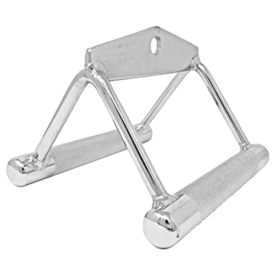
The Garage Fit Double D Handle is a solid steel bar with a chrome finish and diamond knurling along the whole handle for better grip. On the lighter side at 3.9lbs compared to its competitors.
Methodology
Handle Grip
Grip is arguably the biggest distinguishing factor when choosing a seated row bar. Seated row bar grips are likely to boil down to two categories: rubber cover or not. The options available that don’t have a rubber grip will almost certainly have some amount of knurling. The rigidity and texture of the knurling varies but there are options for athletes that prefer it more or less aggressive. In terms of the rubber grip variants, most will also have a texture similar to knurling on the rubber to prevent slippage when lifting with sweaty palms. There are rubber grips available without any pattern on them as well for lifters who would rather a smoother feel against their palms.
Handle Diameter
It might be obvious, but the seated row bars with rubber grips on the handles will likely have a wider diameter. A wider diameter will compel the lifter to apply more force when gripping the handle which has pros and cons. The benefits are stronger and more developed forearms. The drawback is you may not be able to lift as much weight. For lifters that want a wider handle without a rubber grip, there are seated row bar variants that have more oblong shaped handles to emulate the rubber grip width.
Distance Between Handles
The actual physical distance between the handles is a factor that should be taken into consideration. The spectrum of distance between handles on seated row bars goes from give or take 7 inches to upwards of over a foot. The wider options are likely to better target the lats but may also be more difficult to row with for less experienced lifters. These wider bars might also be a better selection for lifters who are larger or have wider frames. The narrower options, which there are significantly more of, are usually within 8 inches between handles.
Weight
Perhaps less significant than other factors, but worth discussing nonetheless, is the weight of the seated row bar on its own. Since seated row bars will pretty much be used exclusively with a cable machine (unless you’re performing a T-bar row and its variants), the difference in the attachment’s weight can have an impact on balance through the motion. Seated row bars usually range from 4lbs to 10lbs.
Wrapping Up
Seated bar rows are an exceptional exercise for building your back and a great inclusion in many training programs. Although it may seem like a seated row bar is a fairly simple piece of equipment, there is a surprising amount of variety to choose from when deciding the best option to add to your arsenal. Knowing your preferences beforehand will help isolate the best seated row bar for you.
FAQs
What muscles do seated rows work?
Seated rows work your traps, lats, and rhomboids.
How do you do you use a seated row machine?
Grab the seated row bar and sit on the bench attached to the cable machine in an upright position. Pull your shoulder blades down and back and then proceed to row.
BarBend tip: Imagine your hands are hooks and lead the row with your elbows.
How do you do a wide grip seated cable row?
The same way as a seated row, except with a wider seated row bar. Assuming proper form is used, the position of your arms should naturally adjust (your elbows will be angled slightly away from your body rather than parallel.)